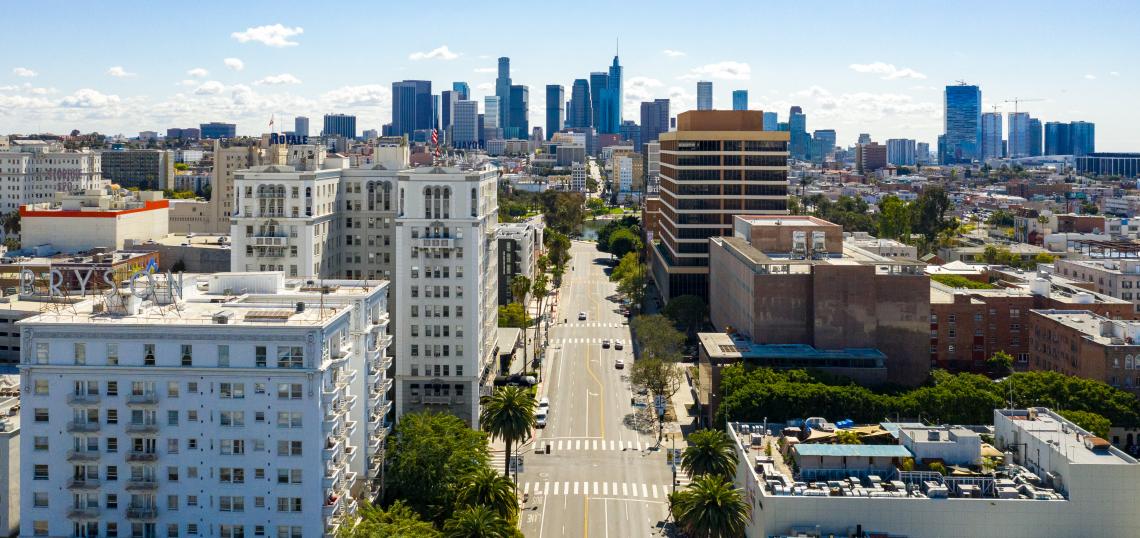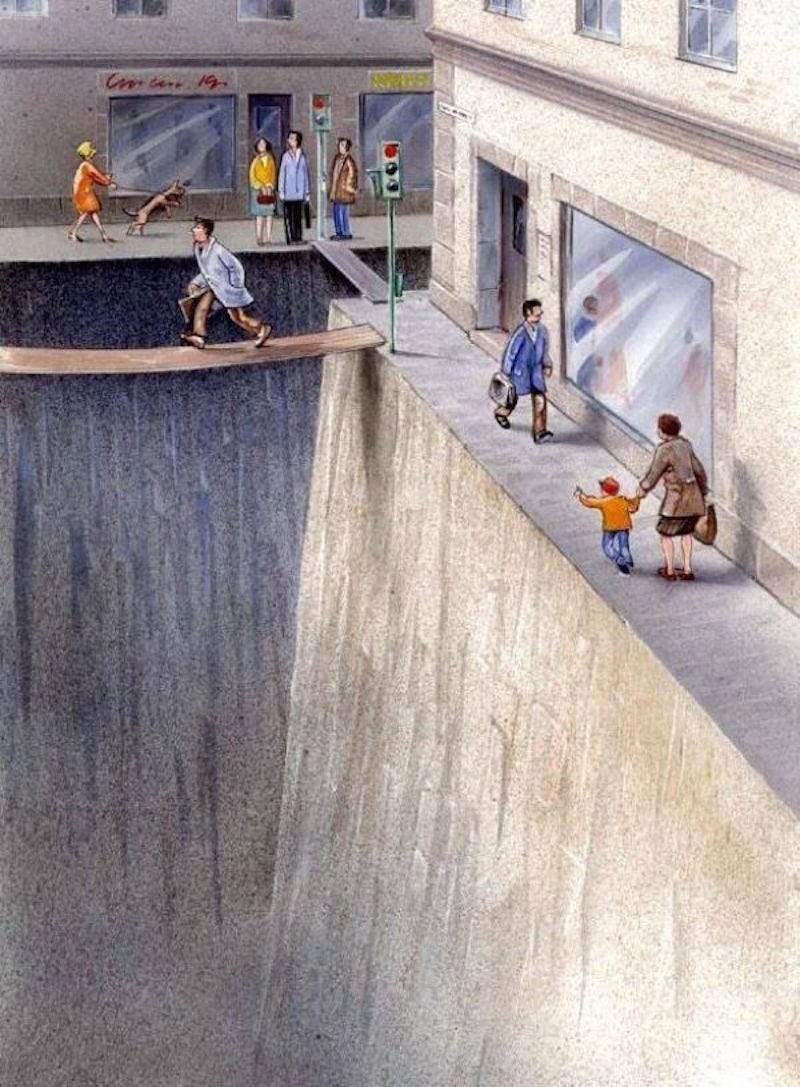“This changes everything.” It’s a common refrain in headlines since the COVID-19 pandemic started wreaking havoc on the United States. New perspectives have grown out of our new reality and we can see what should be different going forward.
Stay-at-home orders have eliminated rush-hour traffic, and the air in the Los Angeles basin is the cleanest it has been in 40 years.
An upside to this situation is that Angelenos have been given a chance to rediscover their own two feet. Soul-crushing, grid-locked commutes have been replaced with walks around the neighborhood. Unending seas of red taillights have been swapped for the opportunity to notice a really cool plant on our block.
There are vastly different long-term, quantifiable impacts from these two different ways of getting around—impacts to the planet and to our health.
Greenhouse gas emissions from automobiles are the primary source of climate-changing atmospheric pollution. Additionally, tailpipe pollution and debris from brakes, tire and road wear-and-tear make cars the leading cause of poor air quality, which are directly linked to higher incidence of respiratory and cardiovascular disease. The sedentary nature of car travel contributes to high obesity rates, diabetes, hypertension, osteoporosis and depression. In California, 8 out of 10 deaths are due to these chronic diseases. Doctors say that just 21 minutes of physical activity a day can significantly improve health outcomes.
As Angelenos realize how good it feels to stroll their neighborhood streets, more are becoming acutely aware of how narrow and cramped our city sidewalks are.
Disability advocates have argued for years that narrow sidewalks, with their numerous obstacles like fire hydrants and light poles, alongside deteriorated pavement, have made many of LA’s sidewalks unnavigable. The courts have agreed.
LA’s wide streets (40% of LA’s ground is covered in asphalt) were designed to give primacy to the car, making otherwise valuable space unusable to most. As if an afterthought to the gluttonous road space demands of the automobile, active modes—walking, cycling, scootering, and the like—are apportioned crumbs at the margin. Thin strips of paint designate the curbside gutters of some streets as a bike lane, and count yourself lucky if that street has a tree canopy.
With parks shut-down, restless Angelenos are hitting the sidewalks, experiencing how limited the pedestrian parts of our streets are. When trying to follow physical distancing orders when approaching others, there may be no choice but to step out into unused traffic lanes. With fewer cars in the streets, pedestrians have reclaimed that pavement.
LA Metro has realized that this Safer-at-Home time of low car traffic is ideal for shutting down Wilshire Boulevard to speed construction of the Purple Line extension. Other public works agencies should take inspiration from Metro and use this opportunity to build their Green New Deal projects as well. A reworking of our streets to make them safer and dignified for people to exist outside of cars would create badly-needed jobs, and provide a gift to generations of future Angelenos.
Let’s put people to work making our streets more accessible to all modes: wide sidewalks, street trees and vegetation to absorb stormwater, protected bike lanes and cool pavement, too. These sorts of complete, green street projects generate 46% more construction jobs than auto-only serving infrastructure, and make our city a healthier and more pleasant place to be.
Throw in some dedicated bus lanes, so that when traffic starts up again, there will be a way to avoid it, and now we’re really talking.
It’s time for our local leaders to act fast and enact a street transformation infrastructure program that provides economic opportunity, while making our streets healthier and more equitable.
This lull is a once in a lifetime chance. Taking advantage of it can make life better when it otherwise returns to “normal”. Given a road buffet of appealing non-car options, Angelenos can do what’s best for their health, both today and for years to come.
Bryn Lindblad is deputy director of Climate Resolve, a nonprofit organization in Los Angeles that catalyzes local solutions to climate change.







